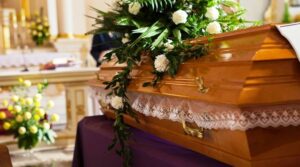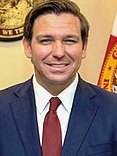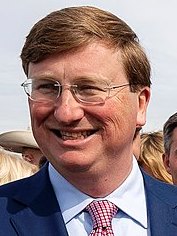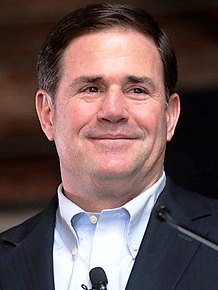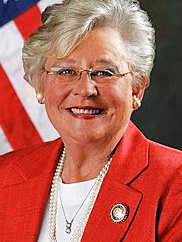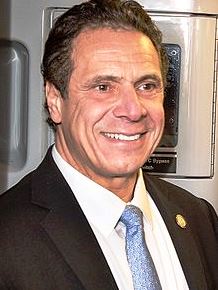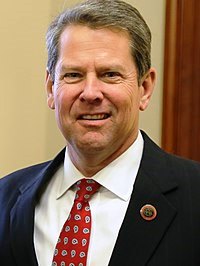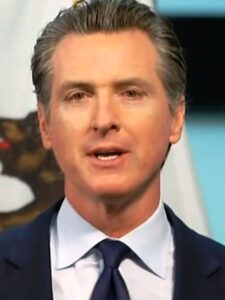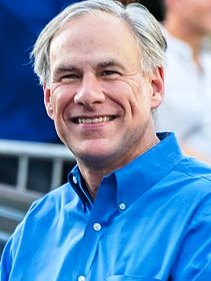Posts Tagged ‘New York’
» posted on Saturday, June 15th, 2024 by Linda Lou Burton
#1. Washington, George
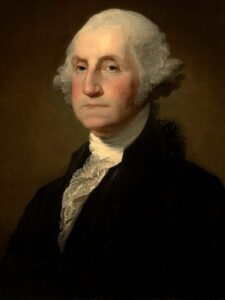 Linda Lou Burton posting from Little Rock, Arkansas – George Washington (February 22, 1732 – December 14, 1799) was red headed. Does that surprise you? The image in my mind when I hear the name “George Washington” is of a rather somber fellow with powdered-white hair. After all, that’s the picture hanging in almost every classroom in the United States. In truth, this red-headed fellow had sparkling grey-blue eyes, was more than six feet tall, and was known for his great strength. If George were alive today, you’d want him at your parties. He was a bit reserved, but had a strong presence and was well respected. He was rugged; he loved horses and collected thoroughbreds. He loved to hunt – foxes, deer, ducks and other game. But George was also an
Linda Lou Burton posting from Little Rock, Arkansas – George Washington (February 22, 1732 – December 14, 1799) was red headed. Does that surprise you? The image in my mind when I hear the name “George Washington” is of a rather somber fellow with powdered-white hair. After all, that’s the picture hanging in almost every classroom in the United States. In truth, this red-headed fellow had sparkling grey-blue eyes, was more than six feet tall, and was known for his great strength. If George were alive today, you’d want him at your parties. He was a bit reserved, but had a strong presence and was well respected. He was rugged; he loved horses and collected thoroughbreds. He loved to hunt – foxes, deer, ducks and other game. But George was also an 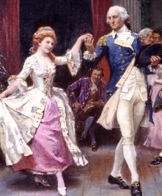 excellent dancer and loved the theater. He drank in moderation but opposed excessive drinking, smoking, gambling, and profanity.
excellent dancer and loved the theater. He drank in moderation but opposed excessive drinking, smoking, gambling, and profanity.
George was a good husband; when he married widow Martha Dandridge Custis in 1759 – he was 26, she was 27 – he assumed the role of husband, father to Martha’s two children Patsy and 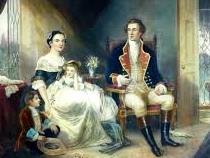 Jacky, and manager of Martha’s considerable estate. When Patsy died suddenly, George canceled all business dealings to stay by Martha’s side for three months. When Jacky died at the age of 26, George and Martha took in their grandchildren Nelly and Washy (George Washington Custis) and raised them. They never had children together, to the regret of both.
Jacky, and manager of Martha’s considerable estate. When Patsy died suddenly, George canceled all business dealings to stay by Martha’s side for three months. When Jacky died at the age of 26, George and Martha took in their grandchildren Nelly and Washy (George Washington Custis) and raised them. They never had children together, to the regret of both.
“Second shift” parenting was common at this point in history – one parent died, the other remarried, and children often grew up with half-siblings and a step-parent. Fortunes were gained through inheritance; land was the most desirable of assets. When George was born as the first child of Augustine and Mary Ball Washington in 1732, he had three older half-siblings from Augustine’s marriage to Jane Butler. Lawrence was 14, Augustine Jr was 12, and Jane was 10. George was just a year old when sister Betty was born; then Samuel, John Augustine, Charles, and Mildred by the time George was 7 years old. Augustine Washington was a prominent public figure; his own father had made a fortune in land speculation. When Augustine died in 1743, George, at the age of 11, inherited 10 slaves and Ferry Farm, near Fredericksburg, Virginia. Lawrence, age 25, inherited the land that became Mount Vernon.
George’s mother Mary never remarried, but chose to manage her land and raise her children on her own. She was unable to send George to school in England, where the older boys were educated; but George did learn mathematics, trigonometry, and land surveying and became a talented draftsman and map maker. George often visited Mount Vernon, and Belvoir, a plantation that belonged to Lawrence’s father-in-law William Fairfax. Fairfax became 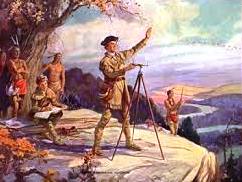 George’s patron; after George received a surveyor’s license from William & Mary College, Fairfax appointed him Surveyor of Culpepper County. George became familiar with the frontier region and by 1752, at the age of 20, had bought 1,500 acres in the Valley.
George’s patron; after George received a surveyor’s license from William & Mary College, Fairfax appointed him Surveyor of Culpepper County. George became familiar with the frontier region and by 1752, at the age of 20, had bought 1,500 acres in the Valley.
That’s how a career begins and a fortune builds; when Lawrence died George leased Mount Vernon from his widow; when she died he inherited the property. When George and Martha married in 1759 she and her children moved to Mount Vernon; it is where George died in 1799, and Martha in 1802; both are buried there. By occupation, George was a planter; he grew tobacco, wheat, and corn. He was counted among the social and political elite of Virginia; inviting guests to Mount Vernon; enjoying leisure time; and eventually becoming politically active.
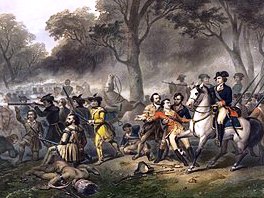 Lest George’s life sound too peaceful and laid back, there were a few other things going on. For instance, George had an unbelievable military career. He fought in a lot of battles! He had two horses shot out from under him in the same battle! He had bullet holes in his coat and hat! He was a fighter, and he never, ever gave up! George was a Colonel in the Colonial forces; General and Commander in Chief of the Continental Army, and a Lieutenant General in the US Army. We’re familiar with the famous Emanuel Leutze painting of Washington Crossing The Delaware; it would take a gallery to house portraits of all the battles he fought, in all the different campaigns. To name a few:
Lest George’s life sound too peaceful and laid back, there were a few other things going on. For instance, George had an unbelievable military career. He fought in a lot of battles! He had two horses shot out from under him in the same battle! He had bullet holes in his coat and hat! He was a fighter, and he never, ever gave up! George was a Colonel in the Colonial forces; General and Commander in Chief of the Continental Army, and a Lieutenant General in the US Army. We’re familiar with the famous Emanuel Leutze painting of Washington Crossing The Delaware; it would take a gallery to house portraits of all the battles he fought, in all the different campaigns. To name a few:
French and Indian War (1754-1763; George was 22-31): Battle of Jumonville Glen – Battle of Fort Necessity – Braddock Expedition – Battle of the Monongahela – Forbes Expedition
American Revolutionary War (1775-1783: George was 43-51): Boston campaign – New York and New Jersey campaign – Philadelphia campaign – Yorktown campaign
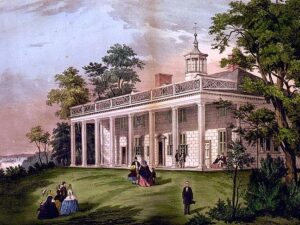 His military service took place before his marriage to Martha and during; when the Treaty of Paris was signed in Annapolis in 1783, and Great Britain officially recognized the independence of the United States, George resigned as Commander in Chief of the Continental Army with plans to retire to Mount Vernon, and a peaceful life with Martha.
His military service took place before his marriage to Martha and during; when the Treaty of Paris was signed in Annapolis in 1783, and Great Britain officially recognized the independence of the United States, George resigned as Commander in Chief of the Continental Army with plans to retire to Mount Vernon, and a peaceful life with Martha.
It didn’t turn out that way. Before he returned to private life, he called for a strong union, sending a letter to all states saying that the Articles of Confederation were no more than a “rope of sand” linking the states. He believed the nation was on the verge of anarchy and confusion, and that a national constitution unifying the states under a strong central government was essential. You know your history – a Constitutional Convention, delegates from all states convened in Philadelphia, a new constitution was called for; continued discussion and disagreement until finally, on February 4, 1789, the state electors voted for a president. There was no quorum present to count the votes until April 5; the next day the votes were tallied and Congressional Secretary Charles Thomson was sent to Mount Vernon to tell George he had won the majority of every state’s electoral votes. John Adams received the second highest vote count, so would be vice-president.
Just think – no campaigning, no national TV debating; and most interesting of all – no desire to BE president of this newly emerging entity called the “United States.” George admitted to “anxious and painful sensations” about leaving Mount Vernon, but departed for New York City on April 16 to be inaugurated. He took the oath of office at Federal Hall in New York City on April 30, 1789 at the age of 57. A crowd of 10,000 gathered; there was a parade complete with marching band, foreign dignitaries, and statesmen; the militia fired a 13-gun salute. George read a speech in the Senate Chamber, asking that “the Almighty Being who rules over the universe…consecrate the liberties and happiness of the people of the United States.”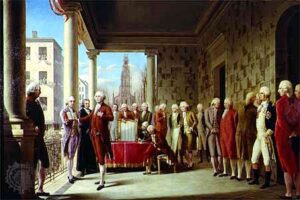
These essays are not about the presidency, but rather the road TO the presidency, and the type of person who won the attention of the electorate. George is unique in that he didn’t set out to “be” president; but he did establish many basic principles that are expected of a president today. For example, unlike the kingly rulers of European countries, George did not want to be called “His Excellency” or “His Highness.” “Mr President” was ample title for him. Other executive precedents included an inaugural address, messages to Congress, and the Cabinet form of management. He refused a salary for serving his country; Congress however insisted and provided him with $25,000 annually to help defray costs.
George was an able administrator and a good judge of talent and character. He talked regularly with department heads, tolerated opposing views, and conducted a smooth transition of power to his successor. He was apolitical and opposed the formation of parties. Although he owned slaves, and supported measures passed by Congress to protect slavery, he later became troubled with the institution of slavery and freed his slaves in a 1799 will, with the provision that the old and young freed people be taken care of indefinitely and the young taught to read and write and placed in suitable occupations. He endeavored to assimilate Native Americans into Anglo-American culture but combated indigenous resistance during instances of violent conflict. He urged broad religious freedom in his roles as general and president, emphasizing religious toleration in a nation with numerous denominations. He publicly attended services of different Christian denominations and prohibited anti-Catholic celebrations in the Army. He engaged workers at Mount Vernon without regard for religious belief or affiliation. He was rooted in the ideas, values, and modes of thinking of the Enlightenment, but harbored no contempt of organized Christianity and its clergy, “We have abundant reason to rejoice that in this Land the light of truth and reason has triumphed over 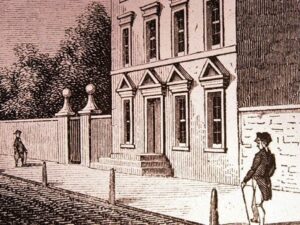 the power of bigotry and superstition.” He proclaimed November 26 as a day of Thanksgiving, always spending the day fasting and taking food to those in prison.
the power of bigotry and superstition.” He proclaimed November 26 as a day of Thanksgiving, always spending the day fasting and taking food to those in prison.
The president’s office was in New York for sixteen months; then moved to Philadelphia, where George and Martha lived from November 1790 to March 1797, before returning to their beloved Mount Vernon at the end of George’s presidency. On December 12, 1799, George inspected his farms on horseback in snow and sleet. He had a sore throat the following day but again went out in freezing, snowy weather to mark trees for cutting. Chest congestion and sore throat followed; he died swiftly on December 14, with Martha seated by his bed. He was 67. As word of his death traveled, church bells rang, businesses closed, and memorial processions were held in major cities. Martha wore a black mourning cape for a year.
George Washington’s legacy endures as one of the most influential in American history. He was called the “Father of His Country” as early as 1778. Congress proclaimed his birthday as a federal holiday in 1885. Many places and monuments have been named in honor of George Washington, most notably the nation’s capital, and the state of Washington. Twentieth-century biographer Douglas Freeman has stated: “The great big thing stamped across that man is character.” Historian David Fischer goes on to define that character as “integrity, self discipline, courage, absolute honesty, resolve, and decision; but also forbearance, decency, and respect for others.”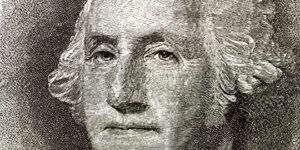
The mark for the leader of the United States was set high at the start. Which of the next 45 presidents measured up to that?
Which of those characteristics are important to you, as you cast your vote on November 5?
» posted on Saturday, September 19th, 2020 by Linda Lou Burton
A Talking-To
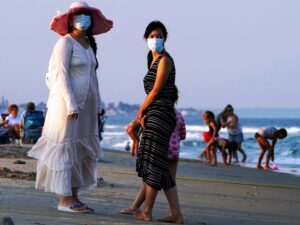 Linda Lou Burton posting from Little Rock, Arkansas – Summer is nearing an end, and I’m wagging my finger to get your attention this Saturday evening about COVID19 in the United States and the World. The virus hasn’t disappeared yet, and sadly, the United States continues to be coping poorly. The World Health Organization reports 30,369,778 cases tallied up around the globe as of September 19. The Centers for Disease Control reports 6,706,374 cases in the United States as of September 19. Do the math: 22% of the COVID19 cases in the world are in the United States. And remember, the United States accounts for only 4% of the world’s population.
Linda Lou Burton posting from Little Rock, Arkansas – Summer is nearing an end, and I’m wagging my finger to get your attention this Saturday evening about COVID19 in the United States and the World. The virus hasn’t disappeared yet, and sadly, the United States continues to be coping poorly. The World Health Organization reports 30,369,778 cases tallied up around the globe as of September 19. The Centers for Disease Control reports 6,706,374 cases in the United States as of September 19. Do the math: 22% of the COVID19 cases in the world are in the United States. And remember, the United States accounts for only 4% of the world’s population.
I REPEAT:
- WORLD COVID19 cases: 30,369,778
- UNITED STATES COVID19 cases: 6,706,374
- UNITED STATES: 22% of World COVID19 cases
- UNITED STATES: 4% of World population
As to DEATHS from COVID19, the World Health Organization reports 948,795 deaths worldwide due to COVID19 as of September 19. The Centers for Disease Control reports 198,099 deaths in the United States due to COVID19 as of September 19.
My stepmother was one of those statistics. She was buried September 13 in Jasper, Alabama (Alabama now the fifth deadliest state to live in). Her name was Opal Burton and she lived for 97 years, until she contracted the virus while quarantined in a nursing home. Not the way anyone should spend their last days on earth; she was in a place that should have been able to keep her safe. It makes me sad, and it makes me angry that we have let this virus dig into our lives the way it has. God bless you Opal, and forgive the laxity that allowed things to get so far beyond control. Your life was much too valuable to be lost in such a way.
DEATHS:
- WORLD COVID19 deaths: 948,795
- UNITED STATES COVID19 deaths: 198,099
- UNITED STATES: 21% of World COVID19 deaths
- UNITED STATES: 4% of World Population
Within the United States, which states have the WORST RECORD?
The FIVE STATES with the HIGHEST percentage of their population DIAGNOSED with COVID19:
- Louisiana: 3.47%. Governor John Bell Edwards, Democrat
- Mississippi: 3.13%. Governor Tate Reeves, Republican
- Florida: 3.12%. Governor Ron DeSantis, Republican
- Arizona: 2.93%. Governor Doug Ducey, Republican
- Alabama: 2.91%. Governor Kay Ivey, Republican
Of those who contracted COVID19, the FIVE STATES with the HIGHEST percentage of those DYING from the virus:
- Connecticut: 8.09%. Governor Ned Lamont, Democrat
- New Jersey: 8.08%. Governor Phil Murphy, Democrat
- New York: 7.29%. Governor Andrew Cuomo, Democrat
- Massachusetts: 6.89%. Governor Charles Baker, Republican
- New Hampshire: 5.57%. Governor Chris Sununu, Republican
 We’ve got to do better people. What are YOU doing personally to make sure the virus doesn’t grab onto your beautiful body? And if it unfortunately HAS DONE THAT, and you are feverish and coughing and feel totally pukey BAD, what are you doing to make sure you don’t spread it around? Our powers in office can make good or bad decisions about issuing mandates and opening or closing facilities. But it is up to YOU to practice good common sense. You’ve heard enough details about COVID19 symptoms, and dangers. You know the drill. In all the political froo-froo and blame-game playacting, it’s still WE THE PEOPLE who can slow the virus down by sensible behavior and good judgment. Don’t be a ding-dong!
We’ve got to do better people. What are YOU doing personally to make sure the virus doesn’t grab onto your beautiful body? And if it unfortunately HAS DONE THAT, and you are feverish and coughing and feel totally pukey BAD, what are you doing to make sure you don’t spread it around? Our powers in office can make good or bad decisions about issuing mandates and opening or closing facilities. But it is up to YOU to practice good common sense. You’ve heard enough details about COVID19 symptoms, and dangers. You know the drill. In all the political froo-froo and blame-game playacting, it’s still WE THE PEOPLE who can slow the virus down by sensible behavior and good judgment. Don’t be a ding-dong!
In 45 days, it’s time to VOTE. Stay tuned for a daily post about each of the 45 presidents who have already served, from GEORGE to DONALD. You DO NOT want to miss that. If you think things are crazy NOW, well, they are, but there has been mucho craziness in the past too.
Don’t despair. You know what to do on November 3.
» posted on Tuesday, September 1st, 2020 by Linda Lou Burton
That Virus Thingy
September 1, 2020, Linda Lou Burton posting from Little Rock, Arkansas – Six months have passed since we really started counting “that virus thingy.” I check the US stats on the Centers for Disease Control website every week; so far no US state or territory has had a week go by with NO new cases. Except for American Samoa, bless their peaceful, well-isolated hearts. Today I took a worldwide look – the World Health Organization has an excellent site and really good advice. It’s vitally important to track what is going on in our own neighborhood, but I believe it is equally important to track what is happening beyond our borders. Compare – how are they managing? How are we, in the US?
for Disease Control website every week; so far no US state or territory has had a week go by with NO new cases. Except for American Samoa, bless their peaceful, well-isolated hearts. Today I took a worldwide look – the World Health Organization has an excellent site and really good advice. It’s vitally important to track what is going on in our own neighborhood, but I believe it is equally important to track what is happening beyond our borders. Compare – how are they managing? How are we, in the US?
 As of the beginning of September, 2020, the World Health Organization shows 25,541,380 cases of COVID-19 reported worldwide; 852,000 deaths. If we want to compare that death count with the population of cities of equal size – we could say that EVERYBODY in Indianapolis, Indiana is dead now. Or, Seattle, Washington. Dead. No living, breathing persons left in those cities. When you look at it THAT way, it seems like a lot of deaths, doesn’t it? Other cities in the US that have populations in the 800,000 range are Charlotte, North Carolina; San Francisco, California, Columbus, Ohio; Forth Worth, Texas. Imagine them gone! Imagine a dystopian horror tale, such as Peter Heller’s The Dog Stars
As of the beginning of September, 2020, the World Health Organization shows 25,541,380 cases of COVID-19 reported worldwide; 852,000 deaths. If we want to compare that death count with the population of cities of equal size – we could say that EVERYBODY in Indianapolis, Indiana is dead now. Or, Seattle, Washington. Dead. No living, breathing persons left in those cities. When you look at it THAT way, it seems like a lot of deaths, doesn’t it? Other cities in the US that have populations in the 800,000 range are Charlotte, North Carolina; San Francisco, California, Columbus, Ohio; Forth Worth, Texas. Imagine them gone! Imagine a dystopian horror tale, such as Peter Heller’s The Dog Stars  (2012); a world where the unexpected happened – a flu pandemic struck – and life on the planet had to adjust to “what is.” While I’m a believer in Positive Thinking, I’m also a believer in being well-informed. And approaching life in ways that are reasonable, and not based on impatience to “get back to normal, now!” Like, opening schools. Sure, kids are getting a sucky education right now. Sure, parents are sick and tired of having to manage and monitor their children’s schooling from home. Sure – well the issue is ablaze in arguments and accusations and vastly different proposals. Politics involved. What is the best solution? Start with facts.
(2012); a world where the unexpected happened – a flu pandemic struck – and life on the planet had to adjust to “what is.” While I’m a believer in Positive Thinking, I’m also a believer in being well-informed. And approaching life in ways that are reasonable, and not based on impatience to “get back to normal, now!” Like, opening schools. Sure, kids are getting a sucky education right now. Sure, parents are sick and tired of having to manage and monitor their children’s schooling from home. Sure – well the issue is ablaze in arguments and accusations and vastly different proposals. Politics involved. What is the best solution? Start with facts.
Here are the numbers broken down by sections of the world, and then the US.
World Health Organization Statistics – Number of Cases Reported Worldwide as of September 1, 2020
- Americas – 13,469,747
- SE Asia – 4,318,281
- Europe – 4,225,328
- Eastern Mediterranean – 1,939,204
- Africa – 1,056,120
- Western Pacific – 501,959
- TOTAL WORLDWIDE – 25,541,380
Of the Americas, that’s both North and South, let’s look at what is happening just in the United States. We’ve got the most cases of any American country — 6,004,443 COVID-19 cases reported to date; 183,050 deaths from the virus. That “death” total kills off everybody in Little Rock, just about! The US numbers are big, and continue to get bigger. Over the next month, I’ll be looking at what other countries in the world are doing to combat a pandemic that is “sure ‘nough” real, and how they are keeping their citizens safe.
Meanwhile, wash your hands, keep your chin up (with MASK intact!), and if you happen to live in any of the states below, get in touch with your governor because your state is leading the pack this week, an honor you don’t want.
US States With Highest Percent of Population Diagnosed With COVID-19 as of September 1
- Louisiana – 3.2%, Governor John Bel Edwards, Democrat
- Florida – 2.87%, Governor Ronald Dion DeSantis, Republican
- Mississippi – 2.81%, Governor Jonathon Tate Reeves, Republican
- Arizona – 2.77%, Governor Douglas Anthony Ducey, Republican
- Alabama – 2.57%, Governor Kay Ellen Ivey, Republican
US States With Greatest Numbers of COVID-19 Cases Diagnosed as of September 1
- California – 704,485, Governor Gavin Christopher Newsom, Democrat
- Florida – 616,629, Governor Ronald Dion DeSantis, Republican
- Texas – 612,969, Governor Gregory Wayne Abbott, Republican
- New York – 435,783, Governor Andrew Mark Cuomo, Democrat
- Georgia – 270,471, Governor Brian Porter Kemp, Republican
US States With Most New Cases Diagnosed in One Week as of September 1
- California – 40,416, Governor Gavin Christopher Newsom, Democrat
- Texas – 35,432, Governor Gregory Wayne Abbott, Republican
- Florida – 22,342, Governor Ronald Dion DeSantis, Republican
- Georgia – 16,522, Governor Brian Porter Kemp, Republican
- Illinois – 15,130, Governor Jay Robert “J. B.” Pritzker, Democrat
» posted on Saturday, December 7th, 2013 by Linda Lou Burton
The Soup Bowl
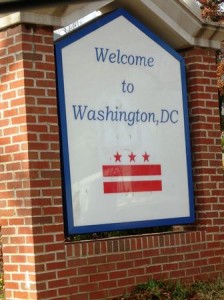 Linda Burton posting from Washington, DC – I call it “DC.” When I lived in Seattle if you said “Washington” folks thought you were referring to the state; Washington DC is considered the “other Washington” there. But I’m on the east coast today, easing into “the District” from Maryland and headed for the US Capitol, an icing-on-the cake post-stop in the Journey Across America. The majestic dome loomed tall as I approached; I circled in confusion and landed a parking spot on the other side. The Washington Monument was a few blocks to my right, covered in scaffolding due to earthquake repair. I coaxed the cats to the window to
Linda Burton posting from Washington, DC – I call it “DC.” When I lived in Seattle if you said “Washington” folks thought you were referring to the state; Washington DC is considered the “other Washington” there. But I’m on the east coast today, easing into “the District” from Maryland and headed for the US Capitol, an icing-on-the cake post-stop in the Journey Across America. The majestic dome loomed tall as I approached; I circled in confusion and landed a parking spot on the other side. The Washington Monument was a few blocks to my right, covered in scaffolding due to earthquake repair. I coaxed the cats to the window to 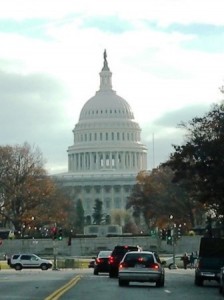 look; then tied my red wool scarf tight around my head before stepping out into the wind. Not a day for sightseeing. But people were out; a Chinese chorus was performing across the street; cameras were in evidence in every hand. Washington, DC! What is so special about this place? Why do 19 million visitors come every year? It’s exciting, and vibrant, that’s why; a bubbling soup bowl brimming with a little bit of everything. The resident population is 601,723 (US Census 2010), but that jumps to a million throughout the workweek; commuters pour in from the suburbs of Maryland and Virginia. After all, the centers of all three branches of the federal government are
look; then tied my red wool scarf tight around my head before stepping out into the wind. Not a day for sightseeing. But people were out; a Chinese chorus was performing across the street; cameras were in evidence in every hand. Washington, DC! What is so special about this place? Why do 19 million visitors come every year? It’s exciting, and vibrant, that’s why; a bubbling soup bowl brimming with a little bit of everything. The resident population is 601,723 (US Census 2010), but that jumps to a million throughout the workweek; commuters pour in from the suburbs of Maryland and Virginia. After all, the centers of all three branches of the federal government are 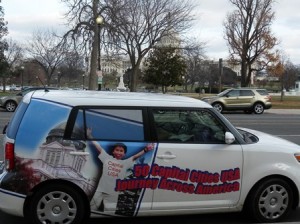 here – the Congress, the President, and the Supreme Court. Flags from all over the world fly here; count 176 foreign embassies. The headquarters of international organizations, trade unions, non-profits, and lobbying groups are here. There are more museums here than you could visit in a year; 19 within the Smithsonian alone. The architecture, park spaces, and memorials are stunning. You’ll find both inspiration and controversy here; it’s all in the soup. » read more
here – the Congress, the President, and the Supreme Court. Flags from all over the world fly here; count 176 foreign embassies. The headquarters of international organizations, trade unions, non-profits, and lobbying groups are here. There are more museums here than you could visit in a year; 19 within the Smithsonian alone. The architecture, park spaces, and memorials are stunning. You’ll find both inspiration and controversy here; it’s all in the soup. » read more
» posted on Thursday, September 5th, 2013 by Linda Lou Burton
Swimming Upstream
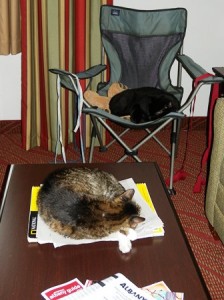 Linda Burton posting from Albany, New York – The cats are snoozing but I’m busy. Today I’m wrapping up 80% of the Journey Across America as we end our stay in the 40th capital city. For the last two months, I feel like I’ve been a salmon swimming upstream, going backwards in history. In Saint Paul, I learned about Pigs Eye Parrant and Lucien Galtier, two names that are part of the city’s beginnings. Pigs Eye moved west from Michigan; Father Galtier came from France by order of Rome and only stayed long enough to establish a church and push for the city name of Saint Paul instead of Pigs Eye. Remember them? In Madison, I learned about James Doty, who came from New York; he lived in Detroit before he bought the land that he platted into the city of Madison; then he
Linda Burton posting from Albany, New York – The cats are snoozing but I’m busy. Today I’m wrapping up 80% of the Journey Across America as we end our stay in the 40th capital city. For the last two months, I feel like I’ve been a salmon swimming upstream, going backwards in history. In Saint Paul, I learned about Pigs Eye Parrant and Lucien Galtier, two names that are part of the city’s beginnings. Pigs Eye moved west from Michigan; Father Galtier came from France by order of Rome and only stayed long enough to establish a church and push for the city name of Saint Paul instead of Pigs Eye. Remember them? In Madison, I learned about James Doty, who came from New York; he lived in Detroit before he bought the land that he platted into the city of Madison; then he 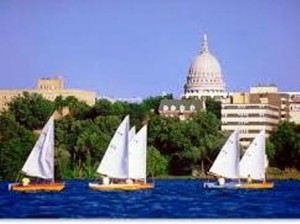 worked for Wisconsin statehood. (Wisconsin is still miffed over the fact that a huge chunk of land to the north belongs to Michigan, even though it is not connected to Michigan, but is a part of Wisconsin’s geography.) From there I continued east to Michigan, and Lansing, (where that huge chunk of land is justified in the land divvy-up because “Ohio got the Toledo Strip, so we got the Upper Peninsula!”). Lansing was settled because in 1835 two slick-talkers scammed some folks in Lansing, New York, who then came and settled that part of Michigan and named their new city Lansing. Meanwhile, down in Ohio,
worked for Wisconsin statehood. (Wisconsin is still miffed over the fact that a huge chunk of land to the north belongs to Michigan, even though it is not connected to Michigan, but is a part of Wisconsin’s geography.) From there I continued east to Michigan, and Lansing, (where that huge chunk of land is justified in the land divvy-up because “Ohio got the Toledo Strip, so we got the Upper Peninsula!”). Lansing was settled because in 1835 two slick-talkers scammed some folks in Lansing, New York, who then came and settled that part of Michigan and named their new city Lansing. Meanwhile, down in Ohio, 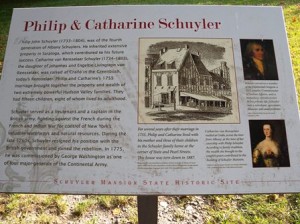 Columbus was settled by miners and farmers and entrepreneurs coming in via the National Road from Maryland, and a lot of former New Yorkers. Now I’m in New York; here everybody talks about Henry Hudson; Dutch names such as Van Rensselaer and Schuyler are on every post; and events of the 1600s are common conversation. History is a long-running soap opera. And I love it! » read more
Columbus was settled by miners and farmers and entrepreneurs coming in via the National Road from Maryland, and a lot of former New Yorkers. Now I’m in New York; here everybody talks about Henry Hudson; Dutch names such as Van Rensselaer and Schuyler are on every post; and events of the 1600s are common conversation. History is a long-running soap opera. And I love it! » read more
» posted on Thursday, August 29th, 2013 by Linda Lou Burton
On Henry’s Behalf
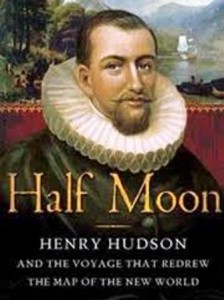 Linda Burton posting from Albany, New York – A lot of good things are discovered while somebody is looking for something else, like a passage to China. The Hudson River Valley is one such example. Now, the river was there eons before Englishman Henry Hudson sailed the Half Moon about as far north as where Albany sits today. That was 1609, when Henry was commissioned by the Dutch East India Company to find a way to get to Asia in a hurry, where they could trade for exotic spices. Henry wasn’t the first European to observe the river; in 1524 Italian explorer Giovanni da Verrazano (sailing for France) sailed all around the Upper Bay; he just didn’t go as far north as Henry did. And before Verrazano came along, the Iroquois, who lived along both banks of the lower portion of the river (now
Linda Burton posting from Albany, New York – A lot of good things are discovered while somebody is looking for something else, like a passage to China. The Hudson River Valley is one such example. Now, the river was there eons before Englishman Henry Hudson sailed the Half Moon about as far north as where Albany sits today. That was 1609, when Henry was commissioned by the Dutch East India Company to find a way to get to Asia in a hurry, where they could trade for exotic spices. Henry wasn’t the first European to observe the river; in 1524 Italian explorer Giovanni da Verrazano (sailing for France) sailed all around the Upper Bay; he just didn’t go as far north as Henry did. And before Verrazano came along, the Iroquois, who lived along both banks of the lower portion of the river (now 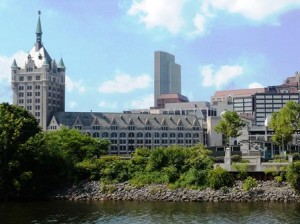 New Jersey and Manhattan) had already named the river “Muhheakantuck” – translate that to “river that flows two ways.” Because the Hudson River is subject to the rise and fall of the tides; as far north as Albany there is a four-foot tide twice a day. The river comes out of Henderson Lake in the Adirondack Mountains and flows 315 miles south before emptying into Upper New York
New Jersey and Manhattan) had already named the river “Muhheakantuck” – translate that to “river that flows two ways.” Because the Hudson River is subject to the rise and fall of the tides; as far north as Albany there is a four-foot tide twice a day. The river comes out of Henderson Lake in the Adirondack Mountains and flows 315 miles south before emptying into Upper New York 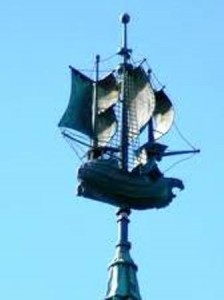 Bay. Its lower half is a tidal estuary; tidal water influences the flow as far north as Troy. I learned that today while sailing on the river myself, on a daily afternoon run of the Dutch Apple Cruises. The cruise started, appropriately enough, with a full-on description of the buildings of Albany alongside the river; with particular attention called to the 800-pound weathervane atop the SUNY headquarters. Hard to make out from a distance, but the narrator assured us it was an exact replica of Henry’s ship, the Half Moon. » read more
Bay. Its lower half is a tidal estuary; tidal water influences the flow as far north as Troy. I learned that today while sailing on the river myself, on a daily afternoon run of the Dutch Apple Cruises. The cruise started, appropriately enough, with a full-on description of the buildings of Albany alongside the river; with particular attention called to the 800-pound weathervane atop the SUNY headquarters. Hard to make out from a distance, but the narrator assured us it was an exact replica of Henry’s ship, the Half Moon. » read more
» posted on Tuesday, August 27th, 2013 by Linda Lou Burton
It’s Really, Really Old
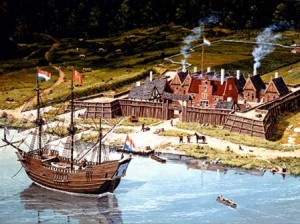 Linda Burton posting from Albany, New York – Age denotes character. Isn’t that what you’ve always heard? If that’s true, then Albany has character aplenty, because Albany is old. Really, really old. It is the longest continuously chartered city in the United States, tracing back to July 22, 1686 when Governor Dongan issued a charter fixing boundaries, setting up a municipal government, naming the first officers, and establishing Albany as the sole market town in the upper Hudson River region. Mayor Pieter Schuyler took the oath of office July 26, 1686, and the rest, as
Linda Burton posting from Albany, New York – Age denotes character. Isn’t that what you’ve always heard? If that’s true, then Albany has character aplenty, because Albany is old. Really, really old. It is the longest continuously chartered city in the United States, tracing back to July 22, 1686 when Governor Dongan issued a charter fixing boundaries, setting up a municipal government, naming the first officers, and establishing Albany as the sole market town in the upper Hudson River region. Mayor Pieter Schuyler took the oath of office July 26, 1686, and the rest, as 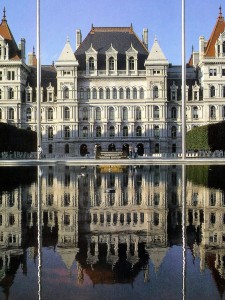 they say, is history. But the European history of the area goes back even further, to 1609, when a fellow by the name of Henry Hudson sailed a ship up the river that now bears his name. This led the Dutch to lay claim to the area; by 1624 the Dutch West India Company had built a trading post on the west bank of the river and named it Fort Orange. There were soldiers for protection, employees to conduct business, and farmers to provide food. By the 1640s a fur trading community had evolved north of the Fort; it took the name Beverwyck. Fast forward; the Fort became less profitable to the Company; there was a devastating Hudson River flood; New Netherland fell to the English. Beverwyck was renamed Albany in
they say, is history. But the European history of the area goes back even further, to 1609, when a fellow by the name of Henry Hudson sailed a ship up the river that now bears his name. This led the Dutch to lay claim to the area; by 1624 the Dutch West India Company had built a trading post on the west bank of the river and named it Fort Orange. There were soldiers for protection, employees to conduct business, and farmers to provide food. By the 1640s a fur trading community had evolved north of the Fort; it took the name Beverwyck. Fast forward; the Fort became less profitable to the Company; there was a devastating Hudson River flood; New Netherland fell to the English. Beverwyck was renamed Albany in 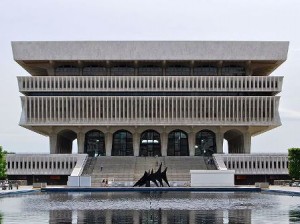 1664, in honor of the Duke of Albany, who later became England’s King James II. The English built a new fort, and that brings us back to the Dongan Charter of 1686. Those are the bones of the Albany story; after a visit to the Empire State Plaza I’ll begin to flesh it out. That’s where the castle-like State Capitol and the sleekly modern Cultural Education Center do a face off, across shimmering pools. » read more
1664, in honor of the Duke of Albany, who later became England’s King James II. The English built a new fort, and that brings us back to the Dongan Charter of 1686. Those are the bones of the Albany story; after a visit to the Empire State Plaza I’ll begin to flesh it out. That’s where the castle-like State Capitol and the sleekly modern Cultural Education Center do a face off, across shimmering pools. » read more
» posted on Sunday, August 25th, 2013 by Linda Lou Burton
A Good Ride
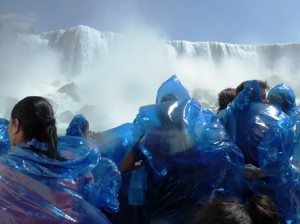 Linda Burton posting from Albany, New York – Some days are more perfect than others. Today was one of my more perfect days as I drove from Buffalo to Albany. My shoes were still wet from yesterday. But who can complain, when your shoes are soaked by the roaring waters of Niagara Falls. The event is a watery blur in my mind and my pictures don’t help; they mostly show shiny blue ponchos, required clothing on a Maid of the Mist boat ride. I was wearing one myself, but it didn’t prevent the torrent of water that sloshed in over my shoes. Again, and again, and again.
Linda Burton posting from Albany, New York – Some days are more perfect than others. Today was one of my more perfect days as I drove from Buffalo to Albany. My shoes were still wet from yesterday. But who can complain, when your shoes are soaked by the roaring waters of Niagara Falls. The event is a watery blur in my mind and my pictures don’t help; they mostly show shiny blue ponchos, required clothing on a Maid of the Mist boat ride. I was wearing one myself, but it didn’t prevent the torrent of water that sloshed in over my shoes. Again, and again, and again. 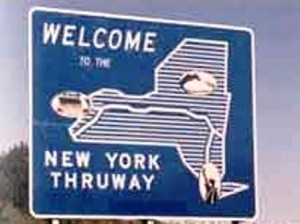 Children shrieked with laughter and mothers gasped as the boat pulled perilously close to American Falls, and then equally close to the Canadian side, and the even bigger Horseshoe Falls. I pulled the front of my poncho down to cover my non-waterproof cameras and blinked the water out of my eyes, unable to hear the narrator, just listening to the roar. And getting wet. Now, that was a good ride; one of those things in life everybody ought to do at least once. I was feeling pretty chipper as I loaded the car this morning in my squishy shoes under blue sky in 70 degree air, perfect. On the outskirts of Buffalo I entered the Toll Plaza
Children shrieked with laughter and mothers gasped as the boat pulled perilously close to American Falls, and then equally close to the Canadian side, and the even bigger Horseshoe Falls. I pulled the front of my poncho down to cover my non-waterproof cameras and blinked the water out of my eyes, unable to hear the narrator, just listening to the roar. And getting wet. Now, that was a good ride; one of those things in life everybody ought to do at least once. I was feeling pretty chipper as I loaded the car this morning in my squishy shoes under blue sky in 70 degree air, perfect. On the outskirts of Buffalo I entered the Toll Plaza 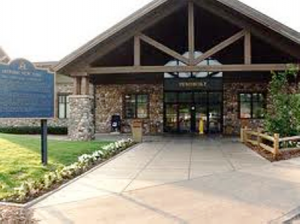 for the I-90 Thruway and got my ticket for another good ride, straight through to Albany. The New York Thruway isn’t fancy and the pavement looks old, but there were no potholes, no construction cones, and few trucks. And best of all, every thirty miles there was a service plaza offering at least three restaurants in a food-court setting, fuel pumps, and information about New York. I stopped at the Pembroke Plaza first, coffee in mind. » read more
for the I-90 Thruway and got my ticket for another good ride, straight through to Albany. The New York Thruway isn’t fancy and the pavement looks old, but there were no potholes, no construction cones, and few trucks. And best of all, every thirty miles there was a service plaza offering at least three restaurants in a food-court setting, fuel pumps, and information about New York. I stopped at the Pembroke Plaza first, coffee in mind. » read more
» posted on Friday, August 10th, 2012 by Linda Lou Burton
Talent Is
 Linda Burton posting from Helena, Montana – “To have talent is no credit to its owner,” Charlie Russell said in 1925. “What man can’t help he should get neither credit nor blame for.” Charles Marion Russell (1864-1926) moved to Montana when he was sixteen, seeking the life of a cowboy. It wasn’t his talent, however; he was fired from his sheep-ranching job in just a few months. He followed Jake Hoover for a while, hunting and trapping; then hired on as a wrangler at a cattle ranch near Missoula. He was finally living the cowboy life, going on cattle drives; he continued this for seven years. He also spent a year with the Blackfoot Indians, learning their ceremonies, hunting methods, and tribal legends. He sketched and drew these things he experienced during a time of Montana’s vanishing frontier – the 1880’s and 1890’s. And Charlie Russell found his talent. He created more than 4,000 paintings, drawings, and sculptures in his lifetime, becoming one of the world’s best-known and most authentic western artists. Today his statue represents Montana in Statuary Hall in Washington, DC. As I read the story of this remarkable man, I see two significant marking points – in 1886 and in 1896 – when the talent he was so modest about began to be recognized. » read more
Linda Burton posting from Helena, Montana – “To have talent is no credit to its owner,” Charlie Russell said in 1925. “What man can’t help he should get neither credit nor blame for.” Charles Marion Russell (1864-1926) moved to Montana when he was sixteen, seeking the life of a cowboy. It wasn’t his talent, however; he was fired from his sheep-ranching job in just a few months. He followed Jake Hoover for a while, hunting and trapping; then hired on as a wrangler at a cattle ranch near Missoula. He was finally living the cowboy life, going on cattle drives; he continued this for seven years. He also spent a year with the Blackfoot Indians, learning their ceremonies, hunting methods, and tribal legends. He sketched and drew these things he experienced during a time of Montana’s vanishing frontier – the 1880’s and 1890’s. And Charlie Russell found his talent. He created more than 4,000 paintings, drawings, and sculptures in his lifetime, becoming one of the world’s best-known and most authentic western artists. Today his statue represents Montana in Statuary Hall in Washington, DC. As I read the story of this remarkable man, I see two significant marking points – in 1886 and in 1896 – when the talent he was so modest about began to be recognized. » read more
» posted on Tuesday, July 10th, 2012 by Linda Lou Burton
Marcus Whitman, Missionary Doctor
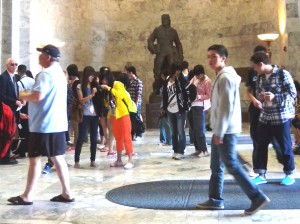 Linda Burton posting from Olympia, Washington – We saw a lot of faces today. Faces of capitol visitors like ourselves, and faces of history, in bronze statues and busts both inside and out, in renderings of the face of George Washington in the shining state seal and on banners furled from balconies, in portraits of former governors hanging on the wall of the Governors Office, and even on the magnificent Tiffany chandelier hanging in the rotunda. But at the end of the day one face and one story in particular stood out. We aimed for an on-the-hour tour – son Rick,
Linda Burton posting from Olympia, Washington – We saw a lot of faces today. Faces of capitol visitors like ourselves, and faces of history, in bronze statues and busts both inside and out, in renderings of the face of George Washington in the shining state seal and on banners furled from balconies, in portraits of former governors hanging on the wall of the Governors Office, and even on the magnificent Tiffany chandelier hanging in the rotunda. But at the end of the day one face and one story in particular stood out. We aimed for an on-the-hour tour – son Rick, 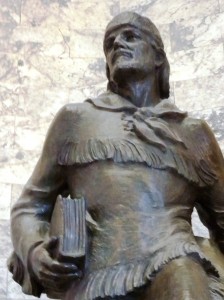 grandkids Andrew and Kayla, and me – and arrived just as a bus-load of Japanese students on a summer study program came in. We began clicking cameras at the same time; the Tour Volunteer manning the front desk stepped up to sort us out for Japanese or English-speaking guides. Above the fray I spotted a hale and hearty looking figure; a statue in bronze who appeared to be looking across the room and beyond. I walked over and read the name inscribed across the bottom: Marcus Whitman. His story is one of good intent, with a tragic ending. Listen. » read more
grandkids Andrew and Kayla, and me – and arrived just as a bus-load of Japanese students on a summer study program came in. We began clicking cameras at the same time; the Tour Volunteer manning the front desk stepped up to sort us out for Japanese or English-speaking guides. Above the fray I spotted a hale and hearty looking figure; a statue in bronze who appeared to be looking across the room and beyond. I walked over and read the name inscribed across the bottom: Marcus Whitman. His story is one of good intent, with a tragic ending. Listen. » read more


